Offense wins championships.
With a quarter of the 2020 NFL season now in the books, we now have a clearer picture of the teams that are poised to make a run at the playoffs. Below, you will find all 32 NFL offenses ranked based on expected points added (EPA) per play. As a refresher, EPA is the measure of a play’s impact on the score of the game.
This ranking is not a prediction of what’s to come, nor is it a list of our favorite schemes, systems or playcallers. These rankings solely reflect each offense's performance on a per-play basis through the first four weeks of the 2020 NFL season. We must also note that we have removed all garbage-time plays so as to ensure that these rankings are as fair as possible.
1. GREEN BAY PACKERS
It’s quite amazing that Aaron Rodgers and Matt LaFleur were able to produce the most efficient passing offense of Week 4 — by a large margin, I might add — with Davante Adams and Allen Lazard out of the lineup due to injury.
Rodgers leaned on his tight ends and running backs in Green Bay's win over Atlanta, and it could not have gone better. On targets to backs and tight ends, Rodgers went a perfect 20-for-20 with 241 yards and four touchdowns while generating positive EPA on 80% of those plays. To put that number in context, the highest rate of positive EPA generated on pass plays over the course of the whole season is 59%.
Green Bay’s offense has finished among the league's best in every single game played this year thanks to Rodgers and his MVP-like play. He leads the league in passing grade at 95.5, which is the highest grade through the first four weeks of a season since Tom Brady‘s mark of 96.3 in 2007.
Green Bay may have been one of the luckiest teams of the 2019 season, but their 4-0 record to start 2020 is fully justified. If this offense keeps cooking, the Packers are a contender.
2. KANSAS CITY CHIEFS
Patrick Mahomes had the second-worst-graded game of his career in Week 4 against the New England Patriots, but the Chiefs offense still remained efficient — they finished 11th in EPA per pass play — thanks to Andy Reid's genius and some help from the receiving corps.
Through four weeks, over 57% of Kansas City’s downfield passes have been to a receiver with a step or more separation from a defender, the third-best rate in the NFL. And when you throw in the best quarterback in the NFL, who still has a top-10 passing grade (79.4) despite that poor game in Week 4, you have yourself a potent offense.
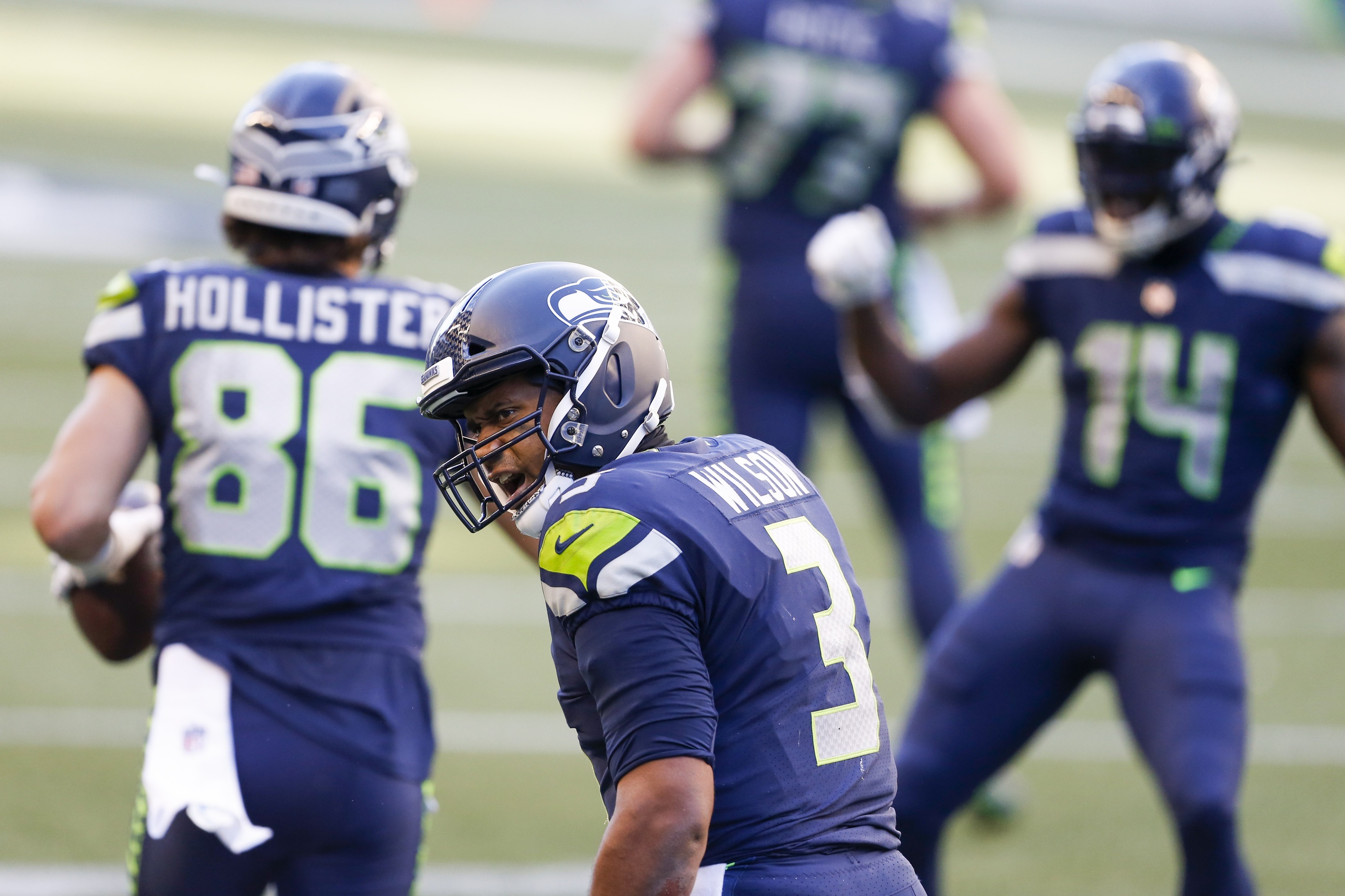
3. SEATTLE SEAHAWKS
Brian Schottenheimer and the Seahawks are finally letting Russell Wilson cook. They’ve lowered their rate of run plays from the eighth-highest in 2019 to 22nd in 2020, and like Aaron Rodgers, Wilson has produced at an MVP level.
Wilson's 94.3 passing grade is second to only the Packers quarterback, and his deep ball has been as pinpoint as ever. On throws of 20 or more yards, Wilson is tied for first in passing grade and has produced seven touchdowns — three more than any other quarterback. And that really should be eight, as one of those ended in a fumble right in front of the end zone. Even with that unfortunate play, the Seahawks still rank in second in total EPA generated from 20-plus-yard throws.
4. BUFFALO BILLS
The improvement we have seen from Josh Allen in 2020 compared to his first two seasons in the league is unbelievable. He is currently sitting pretty with an 89.9 passing grade in 2020, 28 grading points higher than his 2019 regular-season passing grade. For reference, that would be the fifth-largest improvement we have ever seen from a quarterback from one year to the next.
The step forward in accuracy is clear for all to see. His wide receiver trio of Stefon Diggs, Cole Beasley and John Brown — as well as the scheme in which he plays — have generated a high rate of open throws for Allen this year, and he's responded by throwing an accurate pass at the 12th-best rate in the league when targeting those open receivers. Last year, he ranked dead-last among quarterbacks in that very metric.
5. LOS ANGELES RAMS
Sean McVay has had this offense rolling out of the gate in 2020, both through the air and on the ground. It's been a welcome change from the down year of 2019.
The Rams have generated positive EPA on 60% of their “scripted plays” — the first 15 plays of a game — and a big reason for the offensive success is the play-action-heavy offense. They’re currently using play action on 49% of snaps, which is a rate we have never seen before — no quarterback has finished a season over 43% since we began tracking dropbacks in 2012.
Jared Goff has taken great care of the ball so far this year, recording the third-lowest negatively graded throw rate and committing just a single turnover-worthy play.
6. BALTIMORE RAVENS
To no surprise, the Ravens' rushing attack is producing at a high level to start out 2020. They have generated 0.18 EPA per rush on running back carries in non-garbage time, which is the highest in the NFL. That’s actually more efficient than 22 teams are passing the ball on a per-play basis.
One of the great aspects of this offense is its high rate of motion. Baltimore has the highest usage of motion in the NFL this year, at 75% — over three percentage points higher than second and nearly 15 percentage points higher than third. Motion can cause miscommunication for the defense, thus creating big plays for the offense.
Quarterback Lamar Jackson has also been responsible for his fair share of big plays created on the ground, as he has picked up a 10-plus-yard gain on 39 of his carries. And while this team hasn’t been nearly as good through the air overall as they were last year (first in EPA per pass in 2019, 18th in 2020), they have been on play-action passes. When using play-action, Baltimore ranks fifth in EPA per pass play while Jackson has recorded the third-best passing grade at 93.8.
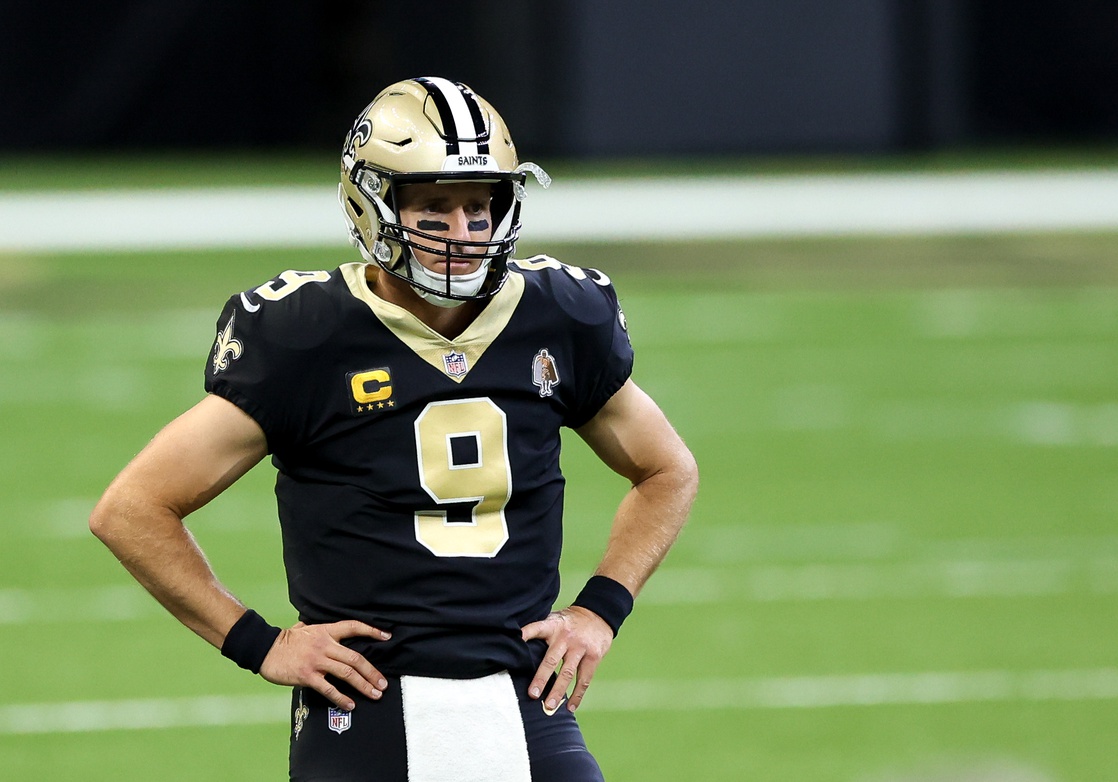
7. NEW ORLEANS SAINTS
After one of the worst three-week stretches of his career within the PFF era, Drew Brees bounced back big in Week 4. He came away with an 89.4 grade for the game and uncorked three big-time throws, which was more than he had in the first three weeks of the year combined.
A big reason for that drastic improvement was his effectiveness throwing the ball downfield, which is what was lacking from Week 1 to Week 3.
Brees posted an average depth of target of 5.1 yards over the first three games, completing only 12 of his pass attempts that traveled 10 or more yards downfield. In Week 4, he had an average depth of target of 9.8 yards and completed 9-of-13 10-plus-yard passes for 174 yards and a touchdown. That game alone took the Saints from 16th in EPA to this spot at No. 7.
8. TENNESSEE TITANS
Ryan Tannehill and the Titans offense took the NFL by storm in the second half of 2019 thanks to the high rate of play-action passes dialed up by Arthur Smith. That play-action use hasn't changed in 2020, as nearly 38% of Tannehill’s dropbacks have utilized some form of play fake, and Tannehill has taken advantage to the tune of 11.9 yards per attempt — the second-highest in the NFL and over 3 yards more than the league average. The Titans have produced 0.63 EPA per play-action pass, leading the league. On non-play-action passes, Tannehill's 5.4 yards per attempt is a league-low mark, while the passing offense overall drops to 20th in EPA per play.
9. CLEVELAND BROWNS
After their Week 1 disaster against the Ravens, Kevin Stefanski has had this Cleveland offense on fire. When taking out that game and just looking at the last three weeks of play, the Browns jump to third on this list.
The run game had a dominant showing against the Dallas Cowboys in Week 4, generating 0.47 EPA per rush in what was the best we have seen in a single game this year.
The offensive line has been the key cog in the team's rushing success. Cleveland's backs have produced 23 explosive runs of 10 or more yards this year when they have been given 3 or more yards before contact — that’s eight more than any other offense.
Some of Cleveland’s best plays this season have been on designed rollouts. Stefanski didn’t call a single one in Week 1, but he has since dialed up 13. Baker Mayfield has produced the highest passing grade in the NFL on those plays, completing 13-of-14 attempts for 158 yards and two touchdowns while generating 0.74 EPA per play.
10. LAS VEGAS RAIDERS
The Raiders' offense is far from an aggressive one, but they have been efficient. The Gruden-led outfit has generated positive EPA on 58.5% of their pass plays this year, third in the NFL, while Derek Carr has thrown 66.7% of his passes accurately, fifth-best.
This offense was rolling to start. Over the first two weeks, they fielded the third-most-efficient offense in the league in regard to EPA per play. In their last two games, they dropped to 21st.
Carr simply has to be more aggressive if he wants his team to climb this list. He presently ranks third-to-last in positively graded throw rate, which isn’t going to cut it.
11. SAN FRANCISCO 49ERS
Kyle Shanahan has had to deal with a slew of injuries to multiple key players, yet he has still helped make this Niners offense a fringe top-10 unit. They come in at 11th in both EPA per pass play and EPA per rush play.
With Nick Mullens under center, Shanahan has dialed up play action at an astounding rate of 46%, trailing only Goff for highest in the NFL. On those plays, Mullens and the 49ers offense has found far more success, as they’ve generated 0.25 EPA per play-action pass as opposed to -0.06 EPA per play without it.
12. DALLAS COWBOYS
The Cowboys offense has been a lot better than its 1-3 record suggests. Mike McCarthy and Kellen Moore have had Dak Prescott dropping back to pass at one of the highest rates in the NFL, and he has been up-and-down — while he does have the ninth-best passing grade at 78.6, he also possesses the NFL's 11th-worst turnover-worthy play rate. He has, however, been an effective downfield passer on a throw-for-throw basis, as his 13.4 yards per attempt on 10-plus-yard throws ranks sixth league-wide, while his 128.4 passer rating is eighth.
13. JACKSONVILLE JAGUARS
The Jacksonville Jaguars went from a former fourth overall pick to UDFA at running back, and they have since produced the sixth-best EPA per rush figure. The unit as a whole has produced an explosive run of 10 or more yards on 17% of its carries, the third-highest rate behind only the Browns and Ravens.
Outside of their Week 3 showing against the Dolphins, the passing offense has fared better than anticipated. Taking that game out, Jacksonville’s EPA per pass goes to 0.25, which would rank seventh in the NFL. Gardner Minshew may not have “ideal” physical tools, but he does routinely deliver a catchable ball — just 15% of his throws beyond the line of scrimmage have been uncatchable, the third-best rate in the league.
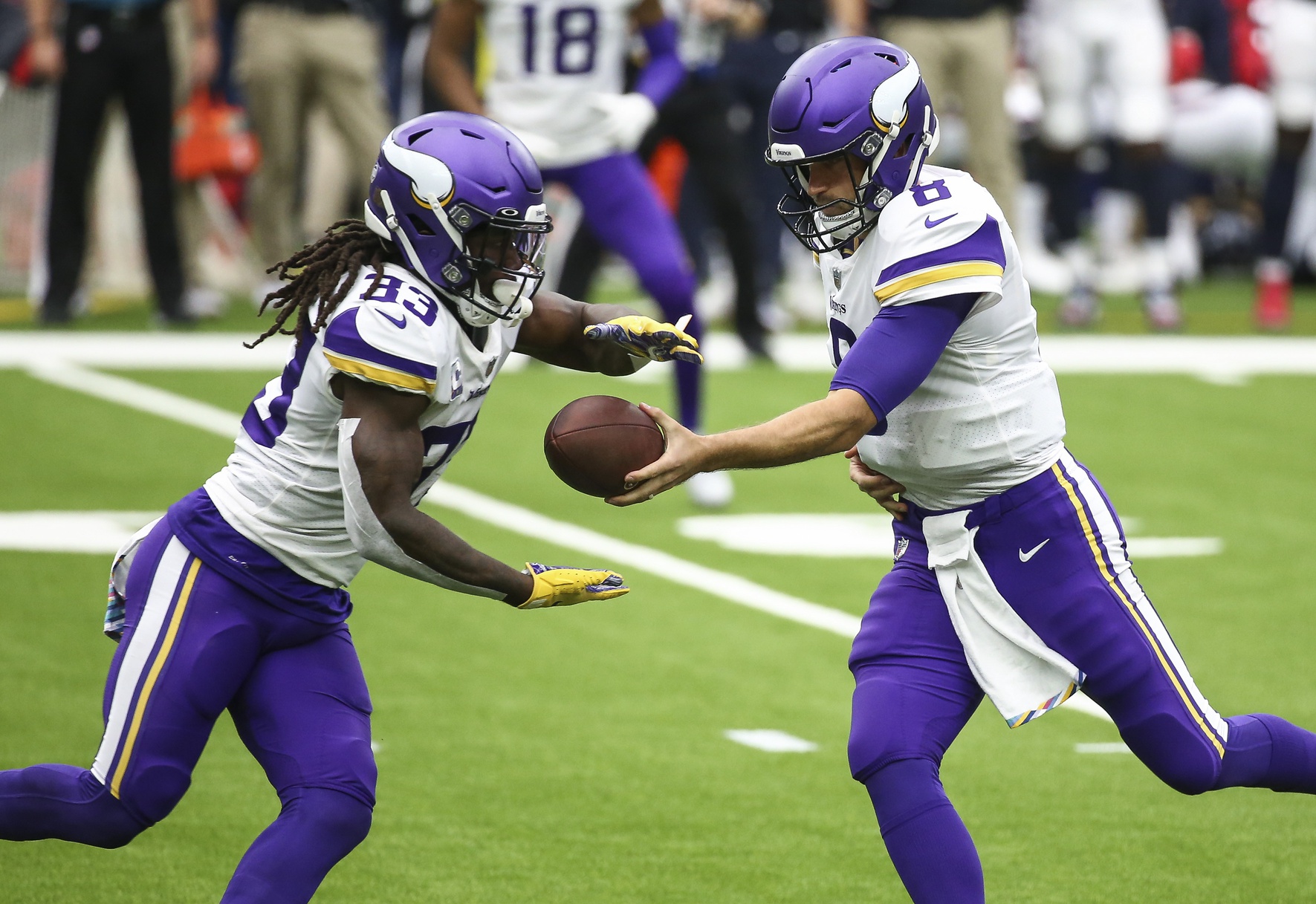
14. MINNESOTA VIKINGS
No team has produced a lower rate of successful passing plays in the first three quarters of each game in 2020 than the Minnesota Vikings (38%). But in the fourth quarter, Kirk Cousins and the Vikings jump all the way to first, at 69% (five percentage points higher than any other team). Some of these big plays have come from trying to overcome a steep deficit, but it wasn’t at a point that it would be considered garbage time. The difference is also noticeable in Cousins’ passing grade, as his 66.5 mark in the first three quarters shoots up to 87.1 in the final period of play.
15. ARIZONA CARDINALS
Kyler Murray’s athleticism and scrambling ability is a huge reason why the Cardinals are this high up the list. On scramble runs, Murray has generated 16.2 total EPA, over six points more than any other quarterback. Murray has also averaged 12 yards per scramble run, which leads the league by a considerable margin.
As a passer, however, Murray hasn’t quite taken that next step forward we were all expecting. He has earned a 70.1 passing grade through Week 4, which granted is a lot better than his 61.1 passing grade he had last season, but that’s not much more than average (it ranks 15th league-wide). That’s not to say he won’t have that breakout at some point this season, but those 2020 MVP hopes don’t seem likely.
16. DETROIT LIONS
The Lions really struggled to start out the year, ranking 25th in EPA per pass through the first two weeks of action. Though things have improved some these last couple of weeks, climbing to fifth in Weeks 3 and 4 combined. There were a few defensive pass interference calls in there that certainly helped, but a lot of this success stemmed from quick underneath throws. On throws of 9 yards or less in those two weeks, Matthew Stafford went 29-of-34 for 258 yards and three touchdowns, leading to the third-best passer rating (127.7) in the NFL on those throws. The receivers did their part, too, as they helped turn six of those into an explosive play of 15 or more yards.
Stafford has not looked like the quarterback many were expecting. Instead of producing at the MVP level he was at before getting hurt in 2019, he’s been the exact opposite. He ranks 27th in both big-time throw rate and negatively graded throw rate so far.
17. MIAMI DOLPHINS
The Dolphins are close to the league average in large part because of Ryan Fitzpatrick‘s elite showing on Thursday Night Football against the Jaguars in Week 3. That night, he produced a 91.5 PFF grade and had just one uncatchable ball on 20 throws. That performance led the Dolphins to 0.61 expected points added per pass, the second-best output of the week.
That said, his downfield passing as a whole has been volatile and should be a cause for concern. His seven turnover-worthy throws on passes of 10 or more yards are the second-most in the NFL and his 62.1 passing grade ranks as the fifth-worst. As fun as those Fitzmagic games are, such as the one he had in Week 3 and the few he had in Tampa Bay a couple of years ago, there is a lack of consistency. It might be Tua time sooner rather than later.
18. NEW ENGLAND PATRIOTS
If we were just looking at the first three weeks of the season, New England would have come in at No. 8 on this list — that’s how much Cam Newton means to this team and how poorly Brian Hoyer and Jarrett Stidham played. Without Newton against Kansas City, the combination of Hoyer and Stidham helped produce -0.45 expected points added per pass, which was the fourth-worst mark by a Patriots offense in a single game since 2006.
Perhaps the most impressive aspect of Newton’s performance is his downfield passing — a facet he struggled with massively in his final years in Carolina due to injuries. Newton’s passing grade on throws of 10-plus yards is the fifth-highest in the NFL. In those first three weeks of the season, New England ranked first in percentage of run plays generating positive expected points added, and Newton’s designed runs played a big part in that.
19. ATLANTA FALCONS
While Atlanta’s defense is perhaps the biggest reason why the team is winless to start 2020, the offense has played a part in that as well, as this passing offense is on pace to be the worst of the Matt Ryan era. Atlanta has produced 0.07 expected points added per play in 2020, which is the worst of Ryan’s NFL career and ranks 22nd in the NFL. At this point, it might be in Atlanta’s best interest to throw in the towel and initiate the tank.
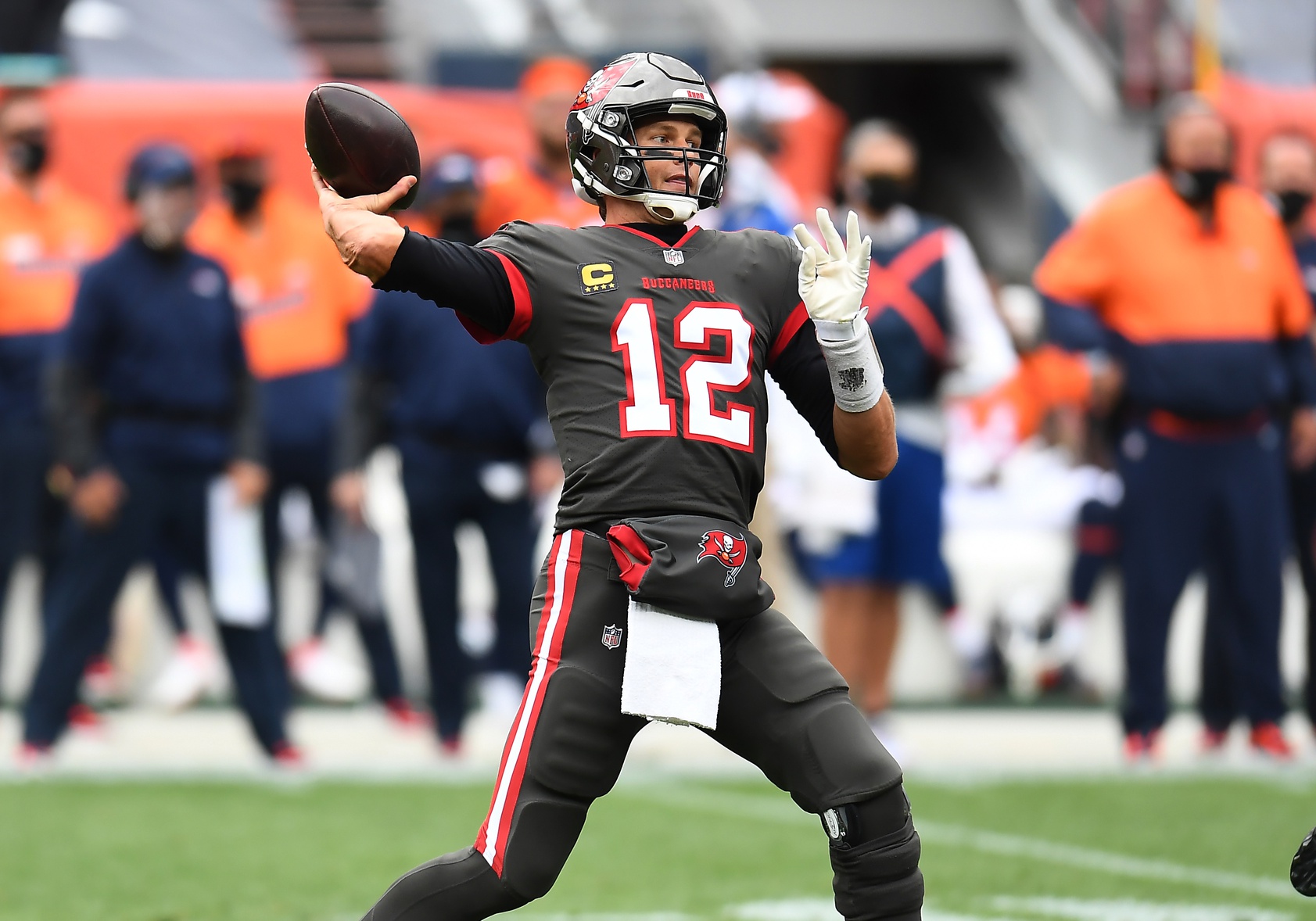
20. TAMPA BAY BUCCANEERS
This is a prime example of the situation I alluded to in the introduction. Just because the Buccaneers ring in here at No. 20 doesn’t mean we would prefer this offense over a team like the Raiders, who are at No. 10. Quarterback Tom Brady is playing like he's in his prime, but the receiving unit has really hindered the team's offensive success thus far.
Brady’s 90.1 passing grade through Week 4 ranks third in the NFL, and his 16 big-time throws are the most among quarterbacks. He has done that while suffering through the most drops of any quarterback (13) and the third-worst rate of catchable passes caught (86%). Four of those drops occurred in the red zone and three played a role in the Bucs walking away with just a field goal instead of a touchdown.
On top of that, Brady’s star wide receivers, Chris Godwin and Mike Evans, have been banged up. The fact that Tampa Bay, which currently sits at a 3-1 record, has the potential to be one of the best offenses in the league despite producing as the 20th-best unit through the first four weeks should be a scary thought for the rest of the NFL.
21. INDIANAPOLIS COLTS
If we were to look solely at the passing attack, the Colts would be all the way up at No. 6. The “run the damn ball” movement hasn’t gone well for Indy this year, as the Colts' rushing attack has generated positive expected points added on just 33.6% of its carries in non-garbage time — the second-worst rate in the NFL.
Quarterback Philip Rivers is producing at a near top-10 level in his first season in Indianapolis. The veteran has posted a 75.9 passing grade thus far, ranking 11th. Frank Reich and company needed a quarterback who could deliver an accurate ball downfield after Jacoby Brissett failed to deliver in that facet in 2019, and Rivers has done just that. His 58.1% accurate pass rate on throws of 10-plus yards is tied for the second-best.
22. CAROLINA PANTHERS
Teddy Bridgewater has been as expected for Carolina so far, producing a 62.2 passing grade that ranks sixth-worst at the position. The completion percentage in the box score looks great, but that can be attributed to his low average depth of target and a lot of open throws created for him.
Carolina’s passing offense is actually 14th in expected points added per play and ranks seventh in total expected points added on throws of 10-plus yards downfield. Again, that can be attributed to open receivers, not necessarily Bridgewater. Nearly 47% of Bridgewater’s throws of 10-plus yards downfield have been to a receiver with open separation (fourth-highest rate). The killer for Carolina has been the rushing attack — the team ranks 25th in expected points added per rush.
23. HOUSTON TEXANS
Deshaun Watson has made a few bad throws, taken way too many sacks and invited in a lot of pressure, but he has still made multiple throws that others can’t. His 11 big-time throws this year are tied for the fourth-most in the NFL. On true dropbacks this year (i.e., no play-action, screen, RPO, quick throw), Watson has produced the third-highest passing grade in the NFL.
Subpar play calling caused Houston to have brutal starts out of the gate in their first four games, as they rank sixth-to-last in expected points added per play on the scripted first 15 plays. When you have a talent like Deshaun Watson, your team shouldn't be this inefficient on a per-play basis, nor should it be 0-4.
24. CINCINNATI BENGALS
It’s quite amazing that Joe Burrow — despite a limited offseason program, no preseason and one of the worst offensive lines in football — is producing at a top-10 level in the first four weeks of his rookie season. He has earned a 79.4 passing grade thus far, tying for seventh with Patrick Mahomes at the position.
Week 1 against the Chargers was rocky for Burrow and the entire offense until his final drive, but since then, the Bengals have been right around the league average in expected points added per pass play (16th). Cincinnati rings in at 24th here largely because of 1) an inefficient rushing attack that ranks 26th in expected points added per rush, and 2) the bad starts the team has had every single week. On the scripted first 15 plays, Cincinnati ranks third-to-last in expected points added per play.
25. PITTSBURGH STEELERS
Many had hoped Ben Roethlisberger would come back from his injury and be his prime self, but that hasn't quite been the case thus far. His accuracy took a hit in his last fully healthy season in 2018, and that’s remained in his return; his uncatchable pass rate on throws of 10-plus yards is the fifth-worst. The Steelers' passing offense has actually found success on a per-play basis despite this, though.
On throws of 9 yards or fewer, they rank sixth in expected points added per pass. Roethlisberger, however, ranks second-to-last in the percentage of positively graded throws. These two things imply that while the Steelers are efficient on a per-pass play basis, it’s not so much due to Roethlisberger making elite throws.
In addition, the rushing attack has really hindered the team’s offensive success. The Steelers have produced -0.26 expected points added per rush this season, the worst in the NFL (next worst is -0.22).
26. LOS ANGELES CHARGERS
The Chargers are going to have a tough decision when Tyrod Taylor is fully healthy. While his offense and the one Justin Herbert is currently leading have posted near-identical expected points added per pass play figures, the rookie has led the Chargers to positive plays at a more consistent rate. Herbert has helped the Chargers produce positive expected points added on 48% of plays, whereas the Taylor-led offense was at 38% (granted, it’s a small sample).
Herbert is capable of making throws that Taylor has no chance at — his big-time throw rate is the 10th-best so far. That said, his accuracy issues from college have shown up in the NFL. On throws beyond the line of scrimmage, just 45.7% of Herbert's passes have been accurate, third-worst in NFL.
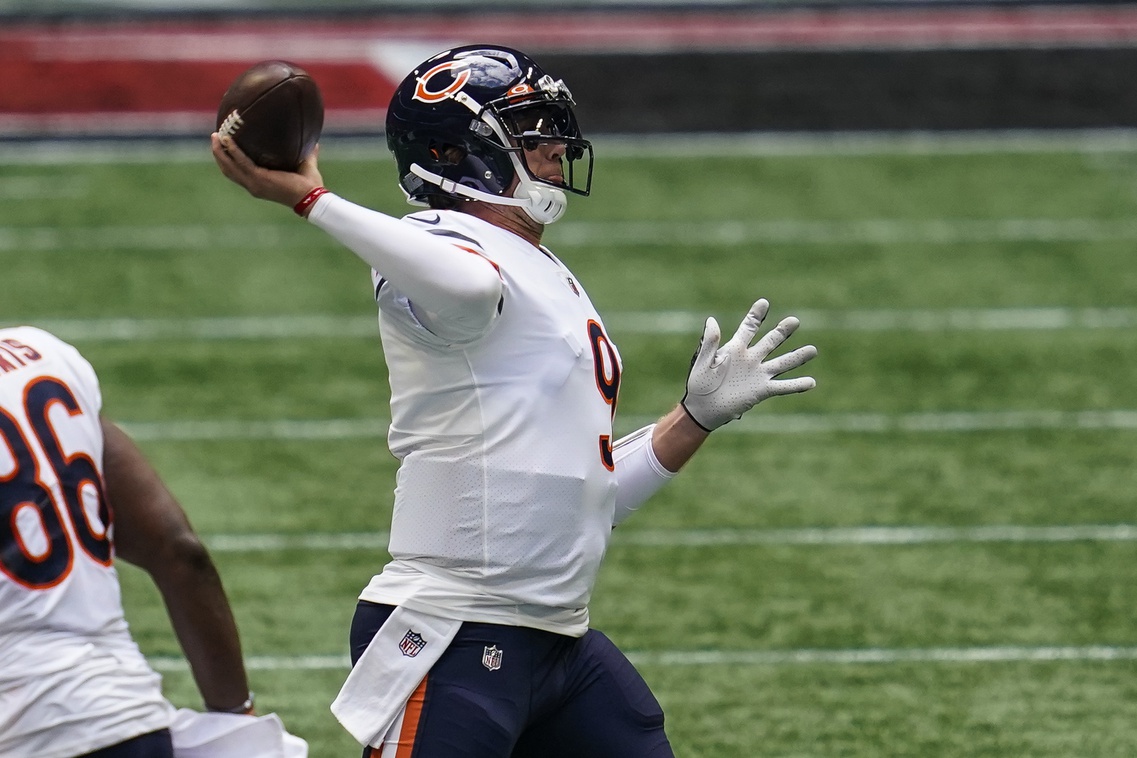
27. CHICAGO BEARS
Chicago’s passing offense has been marginally better with Nick Foles than Mitchell Trubisky thus far. With Foles, the Bears have generated 0.07 expected points added per pass, while they generated 0.05 with Trubisky in 2020. Regardless, those two averages are far from great. Foles is easily the better option of the two due to his upside, just as we saw in the team's comeback win over the Atlanta Falcons. He came in clutch with three big-time throws in the fourth quarter and helped the Bears score 20 unanswered to secure the victory.
While each signal-caller has made their fair share of mistakes this year, they both have had to deal with an extremely low rate of open throws. In fact, just 30% of their total passes combined beyond the line of scrimmage have been to a receiver with open separation. That’s the lowest rate in the league by over 5 percentage points.
28. DENVER BRONCOS
Whether it was Drew Lock, Jeff Driskel or Brett Rypien under center, Denver struggled massively. Lock led the NFL’s least-efficient passing attack prior to getting hurt. The 2019 second-round pick has made only seven starts in his career and has yet to show much to get excited about, earning a career passing grade of 54.8.
Along with the issues the Broncos have at the quarterback position, the ground game hasn’t done much either. Denver ranks third-to-last in the percentage of runs resulting in positive expected points added. Unlike most teams at the bottom of this list, Denver is in a better position to have a successful offense sooner rather than later (as long as they get a new quarterback) with its strong wide receiver corps in Courtland Sutton, Jerry Jeudy and KJ Hamler.
29. WASHINGTON FOOTBALL TEAM
After ranking dead last in both negatively graded and positively graded throw rate through the first four weeks of the year, Dwayne Haskins was officially benched in favor of Kyle Allen. I won’t argue with the notion that he didn’t get a fair shot, but I also won’t argue with Washington benching him. Haskins didn’t put the ball in harm’s way often last year, but his ball placement downfield was almost non-starter-esque, and that’s been the big theme of this season.
Throughout his NFL career, he has completed just four of 41 passes that traveled 10 or more yards to a tight window. On throws to that same depth to a receiver with a step or less of separation, Haskins has thrown an accurate ball just 23% of the time. That’s 6 percentage points lower than any other starting quarterback. On the bright side, Washington does have a star in the making in Terry McLaurin, who has been the NFL’s fifth-highest-graded wide receiver since entering the league in 2019.
30. PHILADELPHIA EAGLES
There was a reasonable argument to be made that the public overrated Carson Wentz a bit, but no one — not even the biggest of haters — expected him to come out and start 2020 like this. Through the first four weeks, Wentz is the NFL’s lowest-graded passer (43.5) and has produced an NFL-high 14 turnover-worthy plays. That’s six more than anyone else and tied for the most by a quarterback in the first four games of a season in the PFF era.
Accuracy has always been an issue for Wentz. But this year, it went from something a team could live with to a liability. On throws of 10 or more yards, 57% of Wentz's passes have been uncatchable. That’s 10 percentage points worse than the quarterback that ranked last in that metric in 2019. It might be time to put in rookie Jalen Hurts.
31. NEW YORK GIANTS
After the Giants' Week 1 showing against the Steelers, there was some small hope that their offense might be taking a step forward with Daniel Jones in his second year starting. While New York lost the game, they at least produced positive expected points added in addition to Jones earning the highest game grade of his career (82.1) against a great Pittsburgh defense.
Then, over the course of the next three games, Jones recorded just a 62.2 passing grade (26th) and produced negative expected points added per pass in every outing, separating his team from the Eagles at No. 30 and barely ranking ahead of No. 32. It doesn’t help that the Giants' defense has forced them to play from behind for most of the season, but the offense has still been poor to start games. In fact, on those scripted first 15 plays in 2020, the Giants have produced -0.39 expected points added per play. That is the worst mark in the league by quite a bit (next worst is at -0.22).
32. NEW YORK JETS
With the way this Jets passing attack has looked, the team may put up a goose egg in the win column for the 2020 season. The Jets have produced -0.23 expected points added per pass in non-garbage time, far worse than any other team in the league (second-worst is at -0.17). Quarterback Sam Darnold is starting to look more and more like a bust, proving to be wildly inconsistent as a downfield passer.
He has just three big-time throws in non-garbage time this year, the fewest among quarterbacks who have started every game they appeared in. Darnold is once again suffering through poor offensive line play (fifth-highest rate of dropbacks under pressure), but even when the Jets do give him a clean pocket, he hasn’t looked much better. His 60.3 clean-pocket passing grade is the third-worst in the NFL.
A winless season is the best-case scenario at this point for the Jets — it’ll secure them Trevor Lawrence, which will vastly improve this ugly offense.
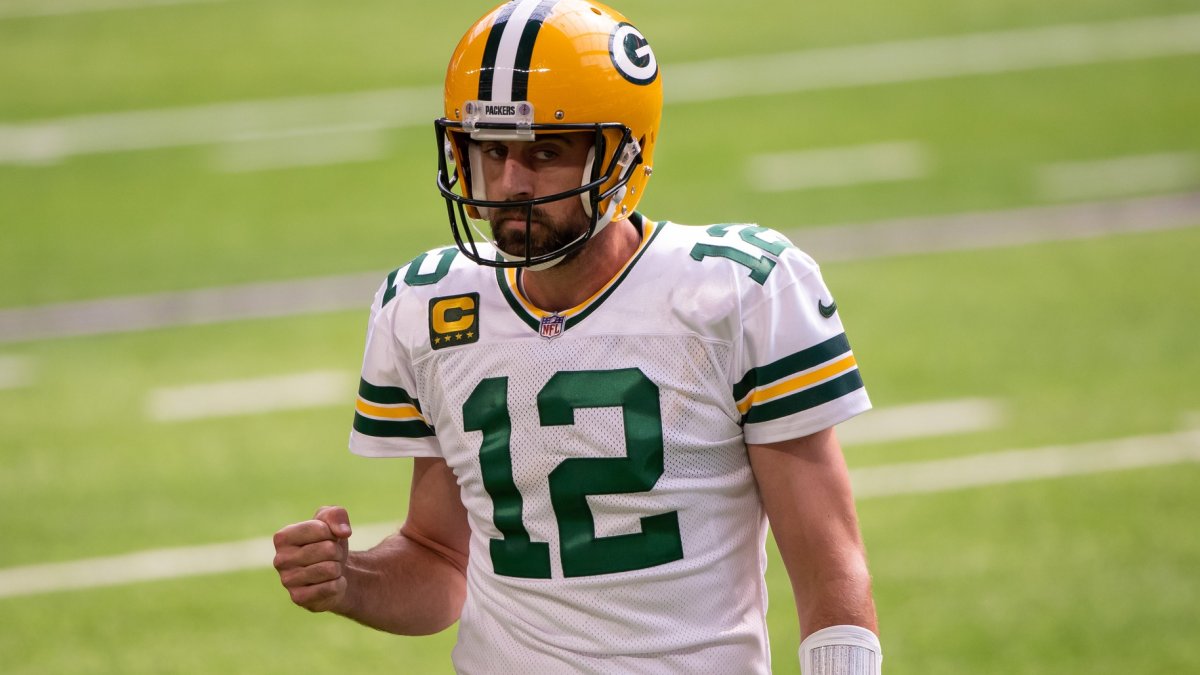


 © 2024 PFF - all rights reserved.
© 2024 PFF - all rights reserved.